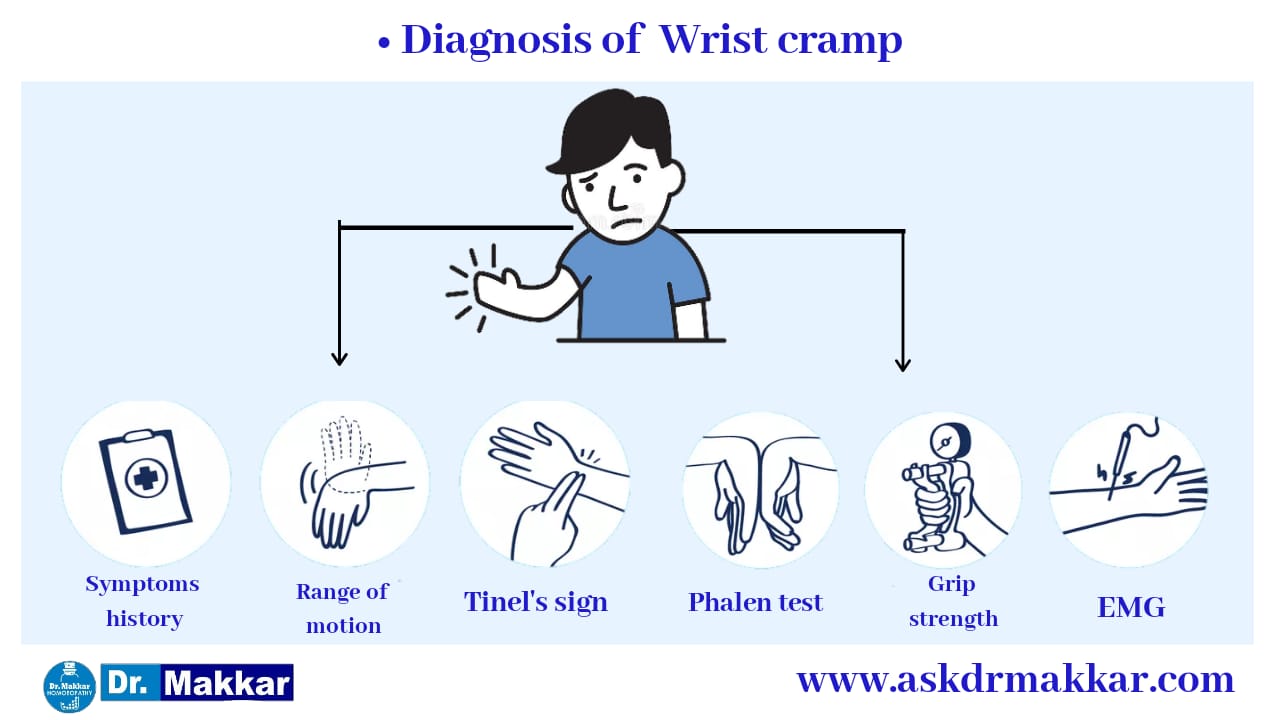
Diagnosis of writer's cramp is based on information from the individual and the physical and neurological examination. At this time, there is no test to confirm diagnosis of writer's cramp, and in most cases, laboratory tests are normal
Early diagnosis and treatment are important to avoid permanent damage to the median nerve.
A physical examination of the hands, arms, shoulders, and neck can help determine if the person’s complaints are related to daily activities or to an underlying disorder. A physician can rule out other conditions that mimic carpal tunnel syndrome. The wrist is examined for tenderness, swelling, warmth, and discoloration. Each finger should be tested for sensation and the muscles at the base of the hand should be examined for strength and signs of atrophy.
Routine laboratory tests and X-rays can reveal fractures, arthritis, and nerve-damaging diseases such as diabetes.
Specific tests may produce the symptoms of CTS. In the Tinel test, the doctor taps on or presses on the median nerve in the person’s wrist. The test is positive when tingling in the fingers or a resultant shock-like sensation occurs. The Phalen, or wrist-flexion, test involves having the person hold his or her forearms upright by pointing the fingers down and pressing the backs of the hands together. Carpal tunnel syndrome is suggested if one or more symptoms, such as tingling or increasing numbness, is felt in the fingers within 1 minute. Doctors may also ask individuals to try to make a movement that brings on symptoms.
Electrodiagnostic tests may help confirm the diagnosis of CTSs. In a nerve conduction study, electrodes are placed on the hand and wrist. Small electric shocks are applied and the speed with which nerves transmit impulses is measured. In electromyography, a fine needle is inserted into a muscle; electrical activity viewed on a screen can determine the severity of damage to the median nerve.
Ultrasound imaging can show abnormal size of the median nerve. Magnetic resonance imaging (MRI) can show the anatomy of the wrist but to date has not been especially useful in diagnosing carpal tunnel syndrome.
Tinel's sign: The sign that a nerve is irritated. Tinel's sign is positive when lightly banging (percussing) over the nerve elicits a sensation of tingling, or 'pins and needles,' in the distribution of the nerve.
Phalen test is performed by asking the patient to place both elbows on a table while keeping both forearms vertical and flexing both wrists at 90 degrees for 60 seconds. A positive test is defined as the occurrence of pain or paresthesias in at least one finger innervated by the median nerve.